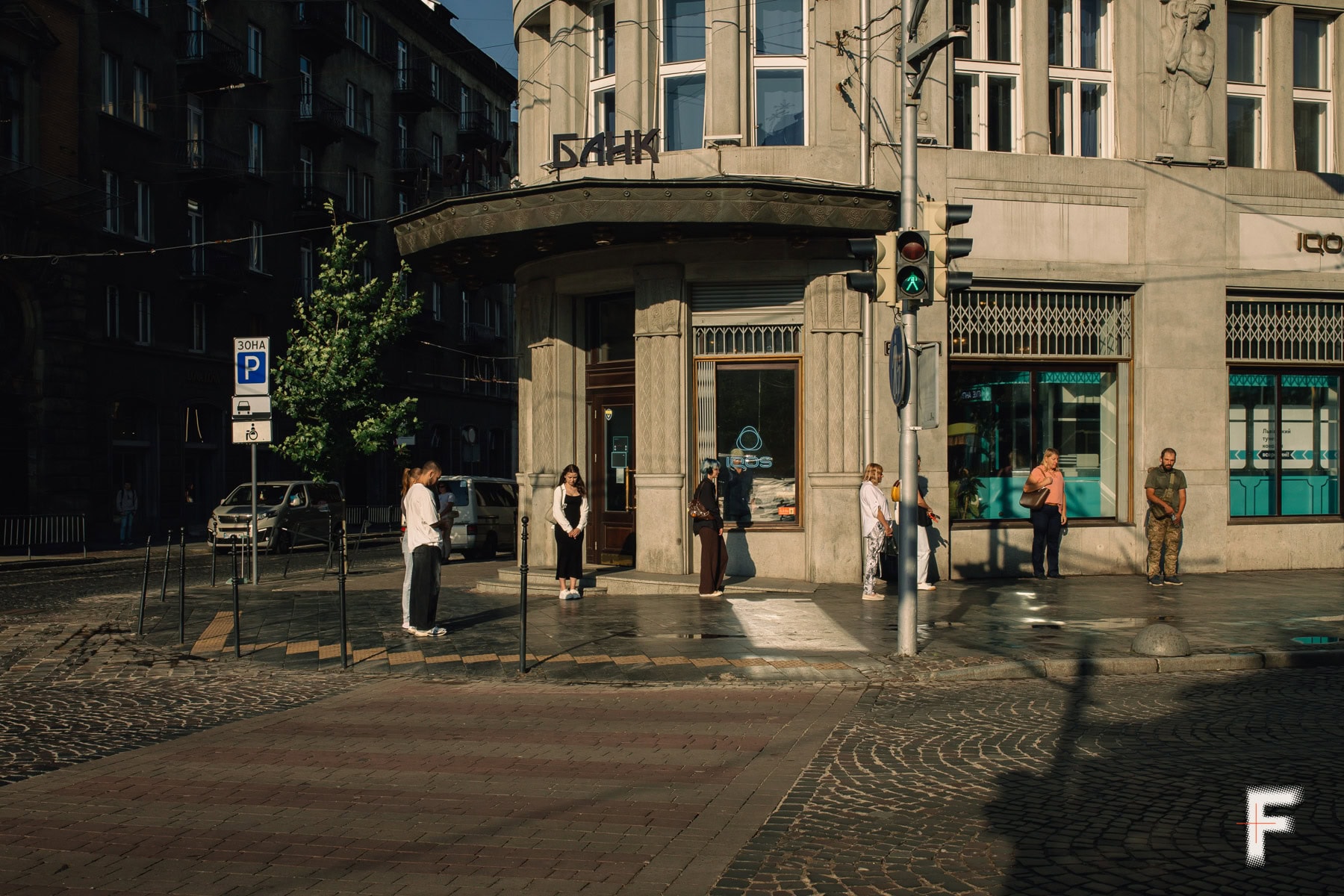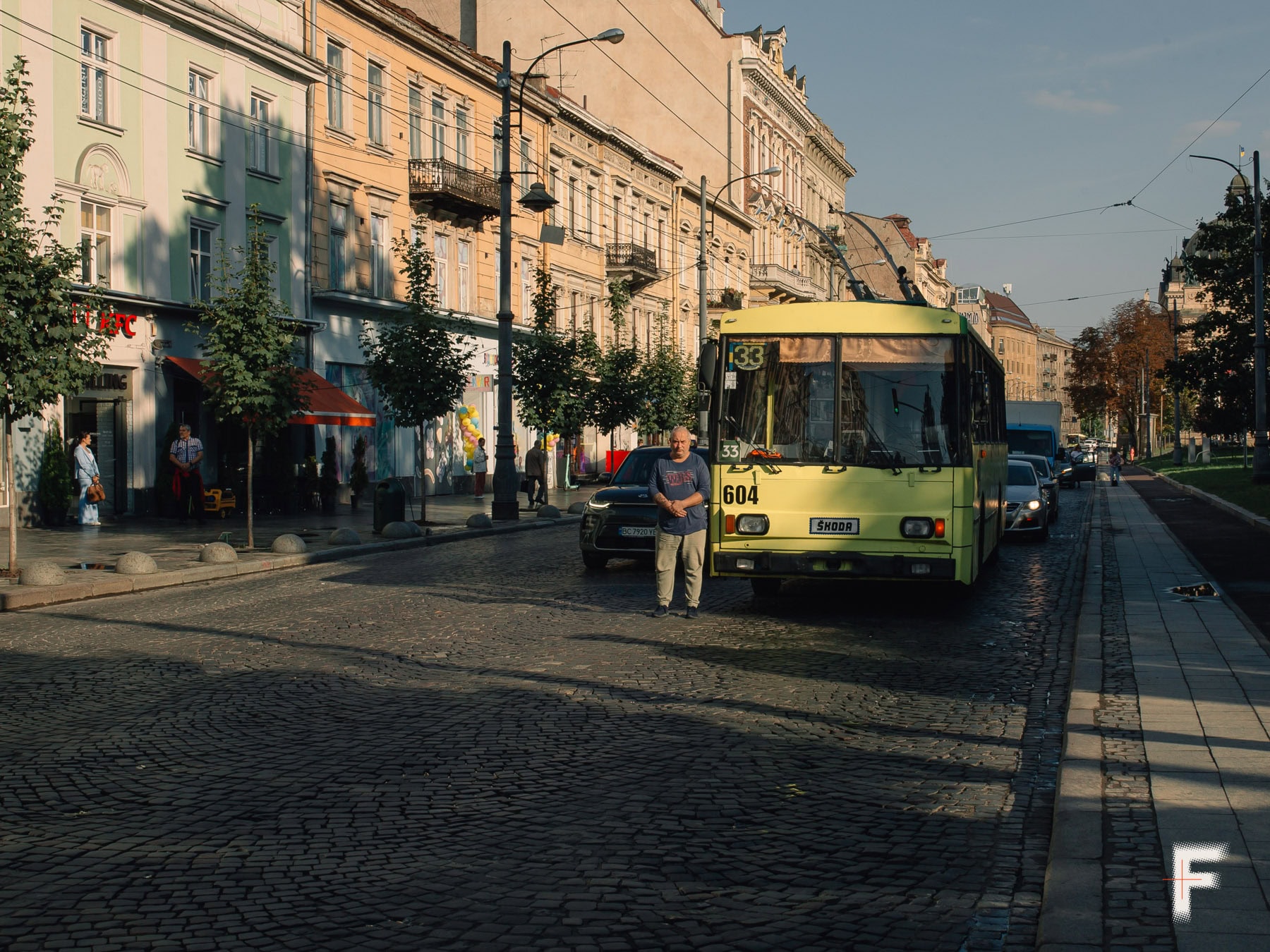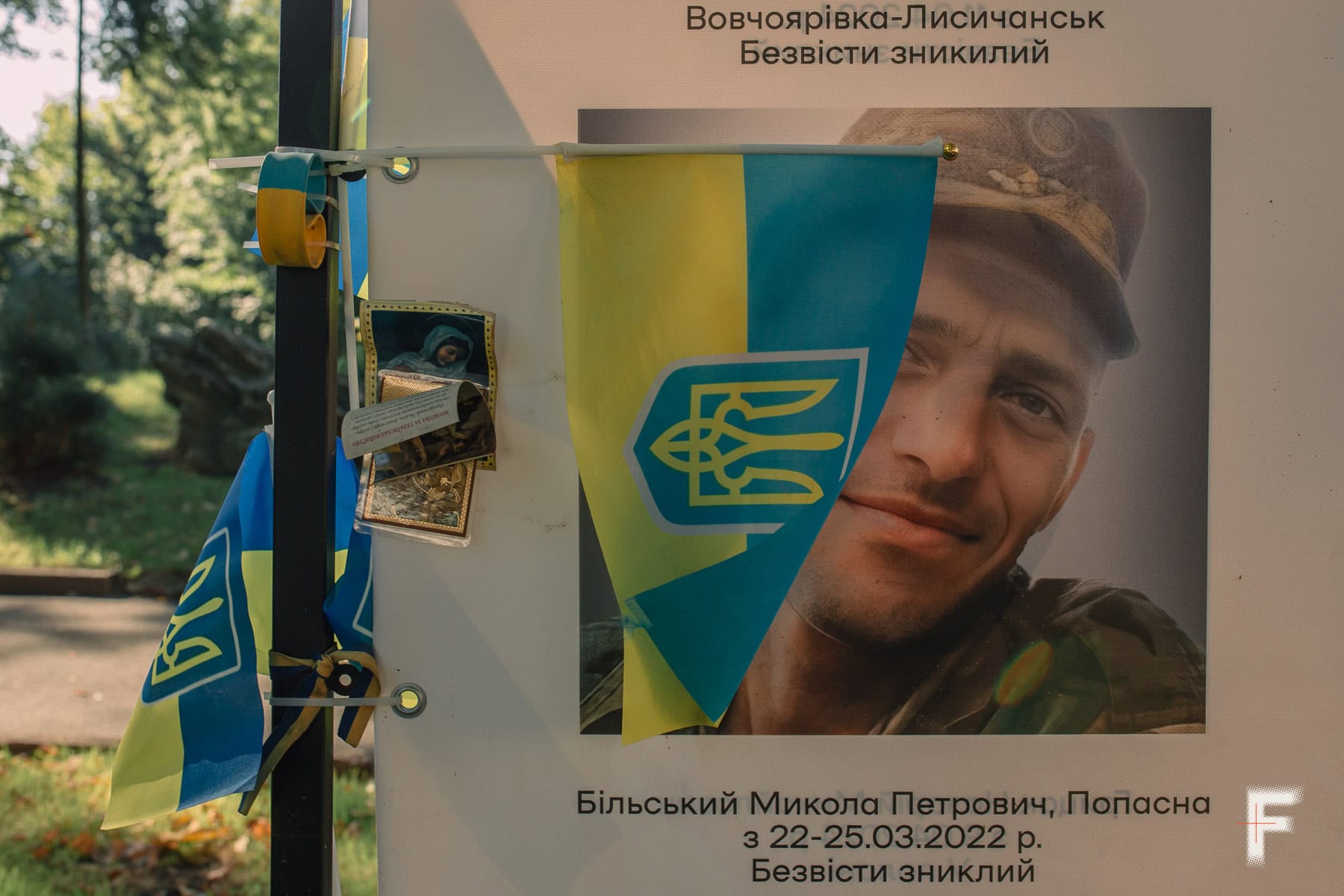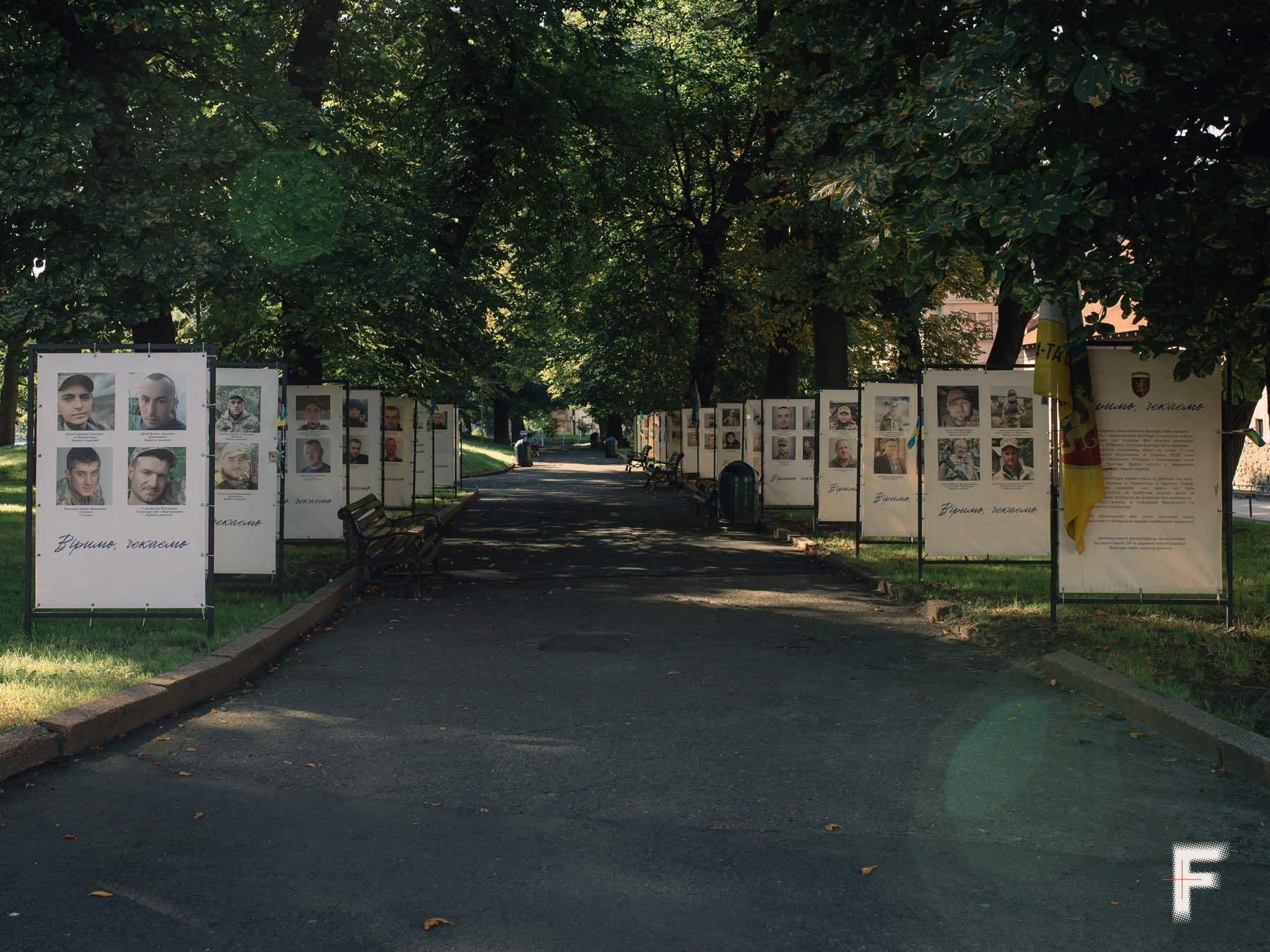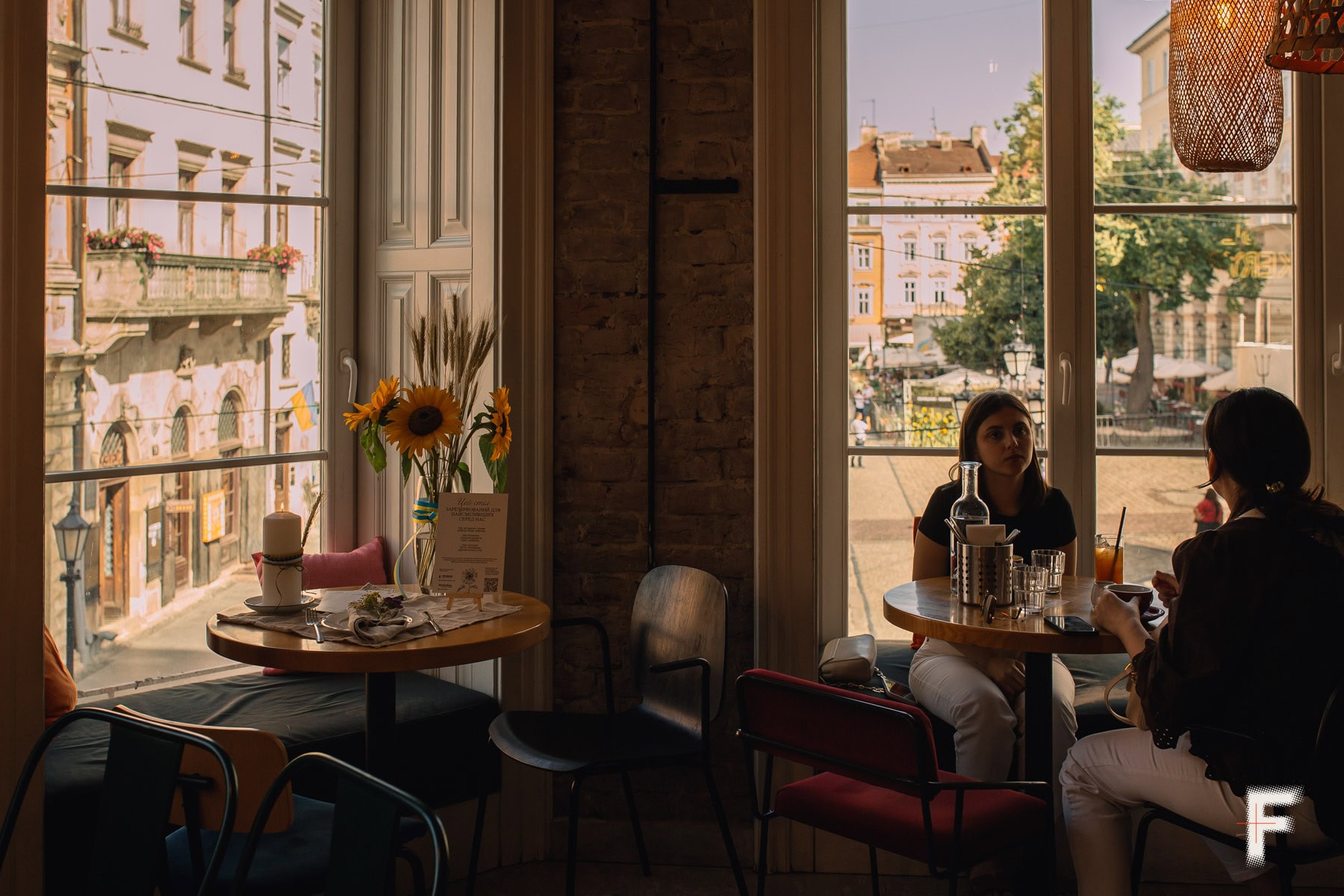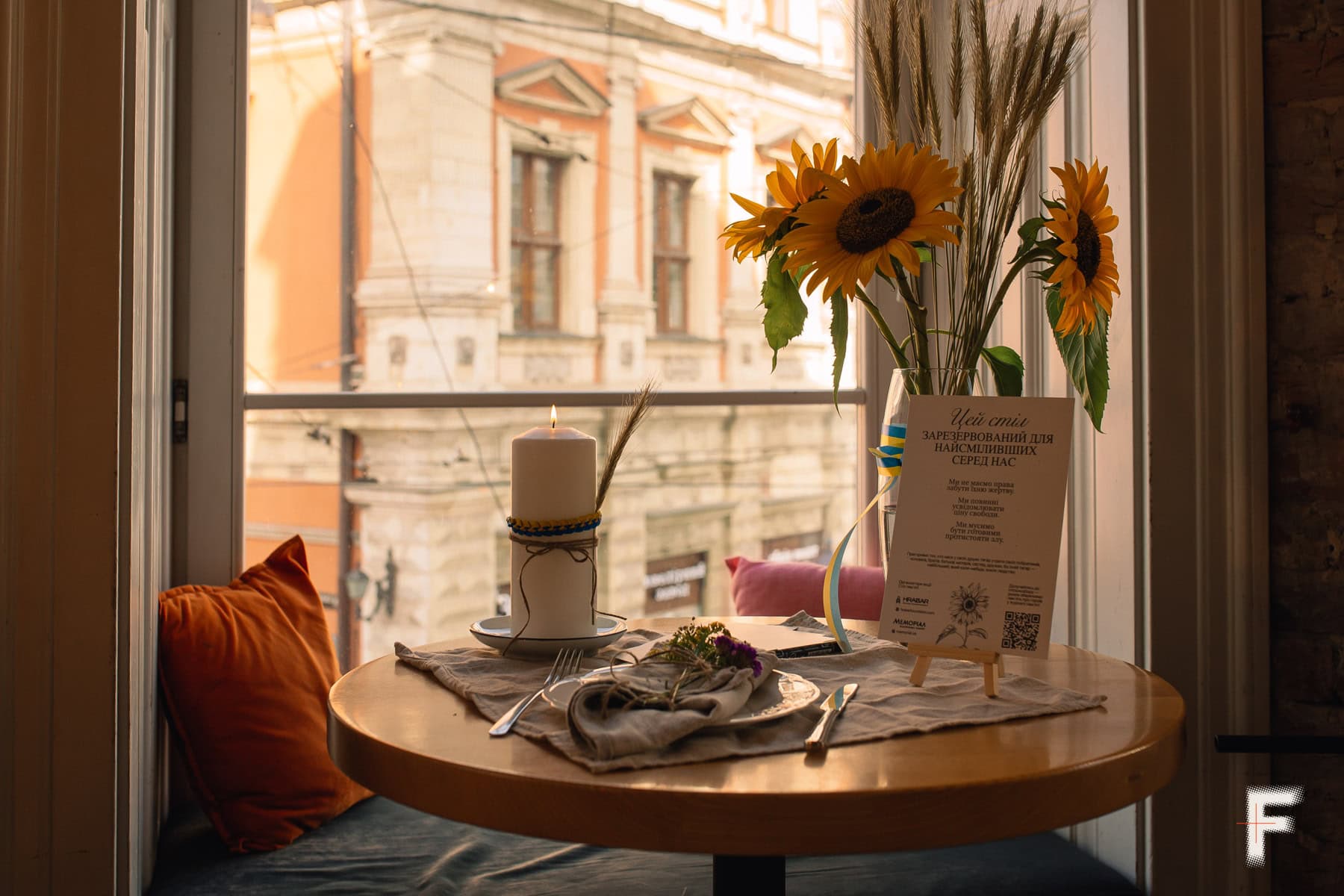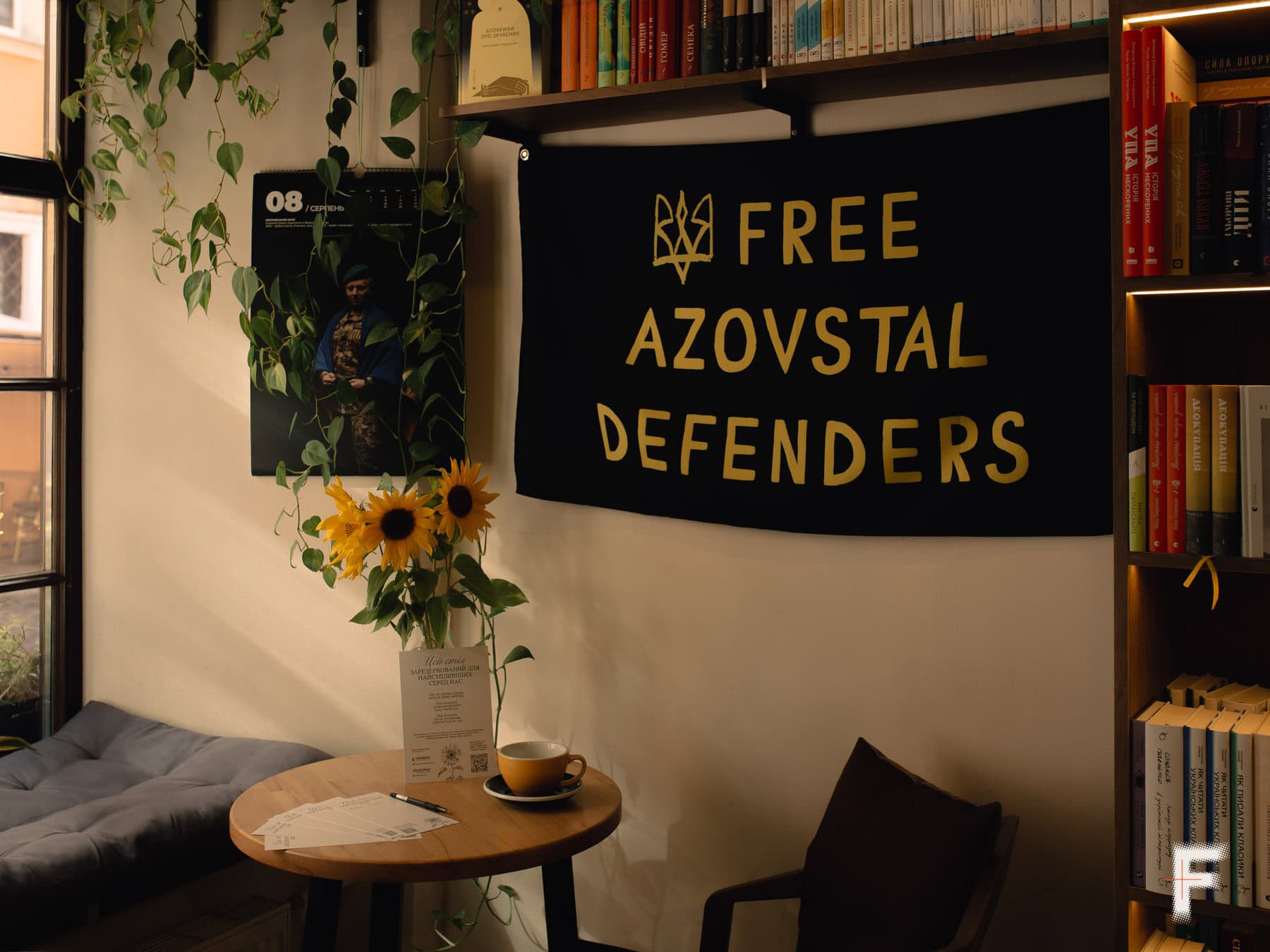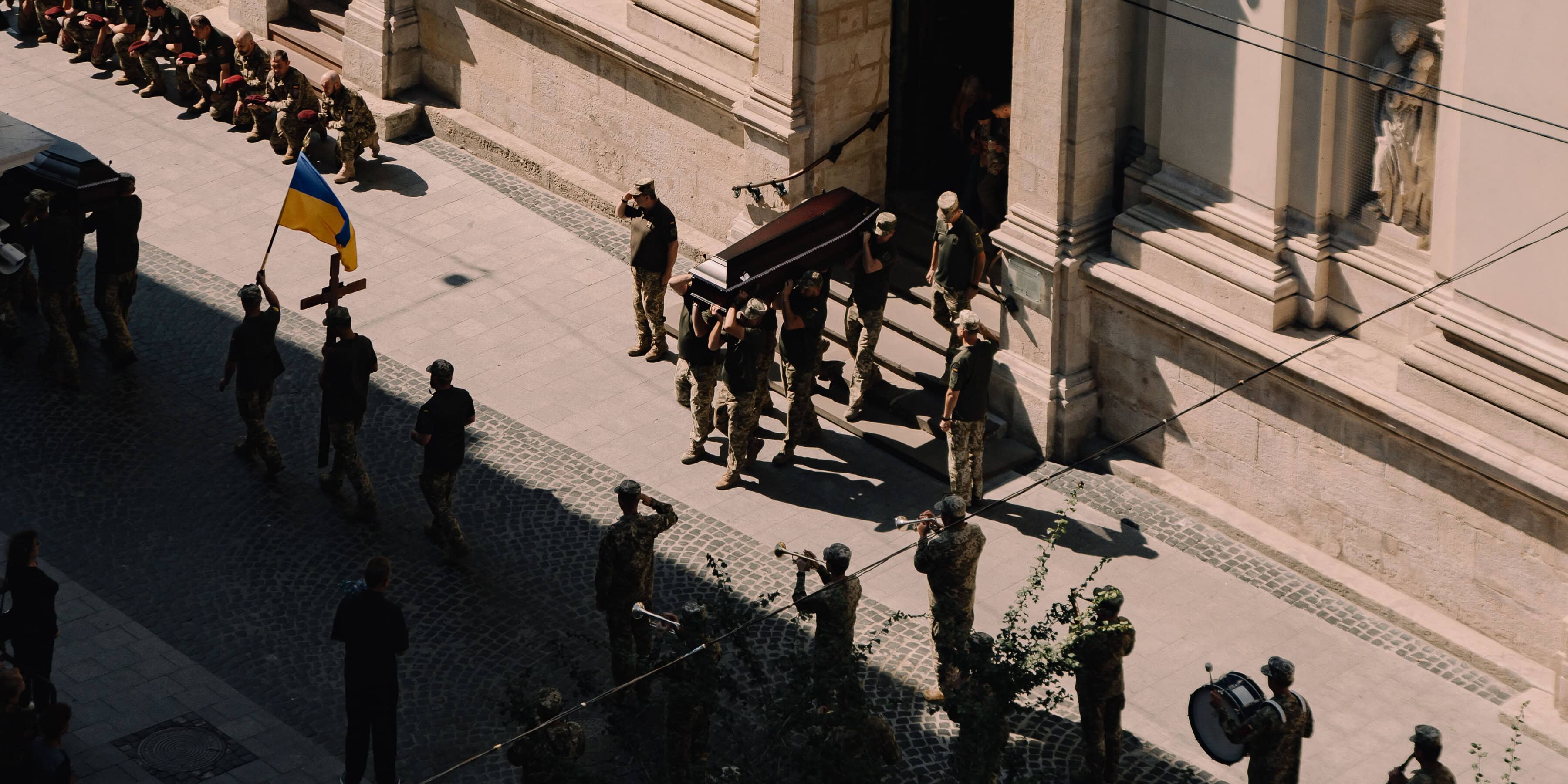

Lviv honors memory: remembering the war, far from the frontlines
The city falls silent as it greets the funeral procession. Just a few minutes later, as the procession turns a corner, street traffic resumes. The act of remembrance permeates reality, shaping the rhythm of everyday life. How Lviv lives with the war, far from the front – a report by Frontliner.
“Just because it is relatively quiet here, it doesn’t mean the war won’t be here tomorrow,” says Mariia Petrykiv, a consultant at the cosmetics store across from the Garrison Church in Lviv.
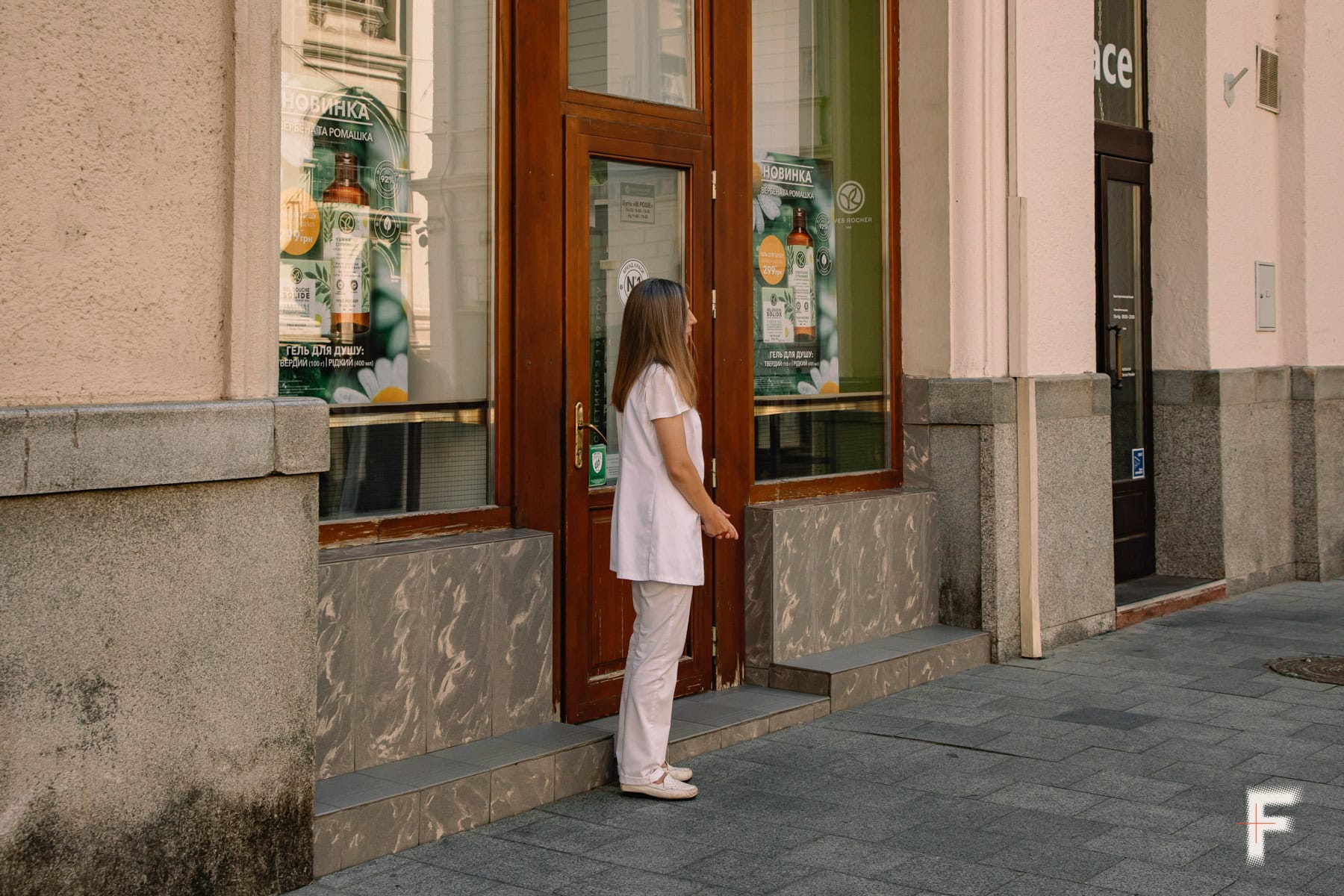

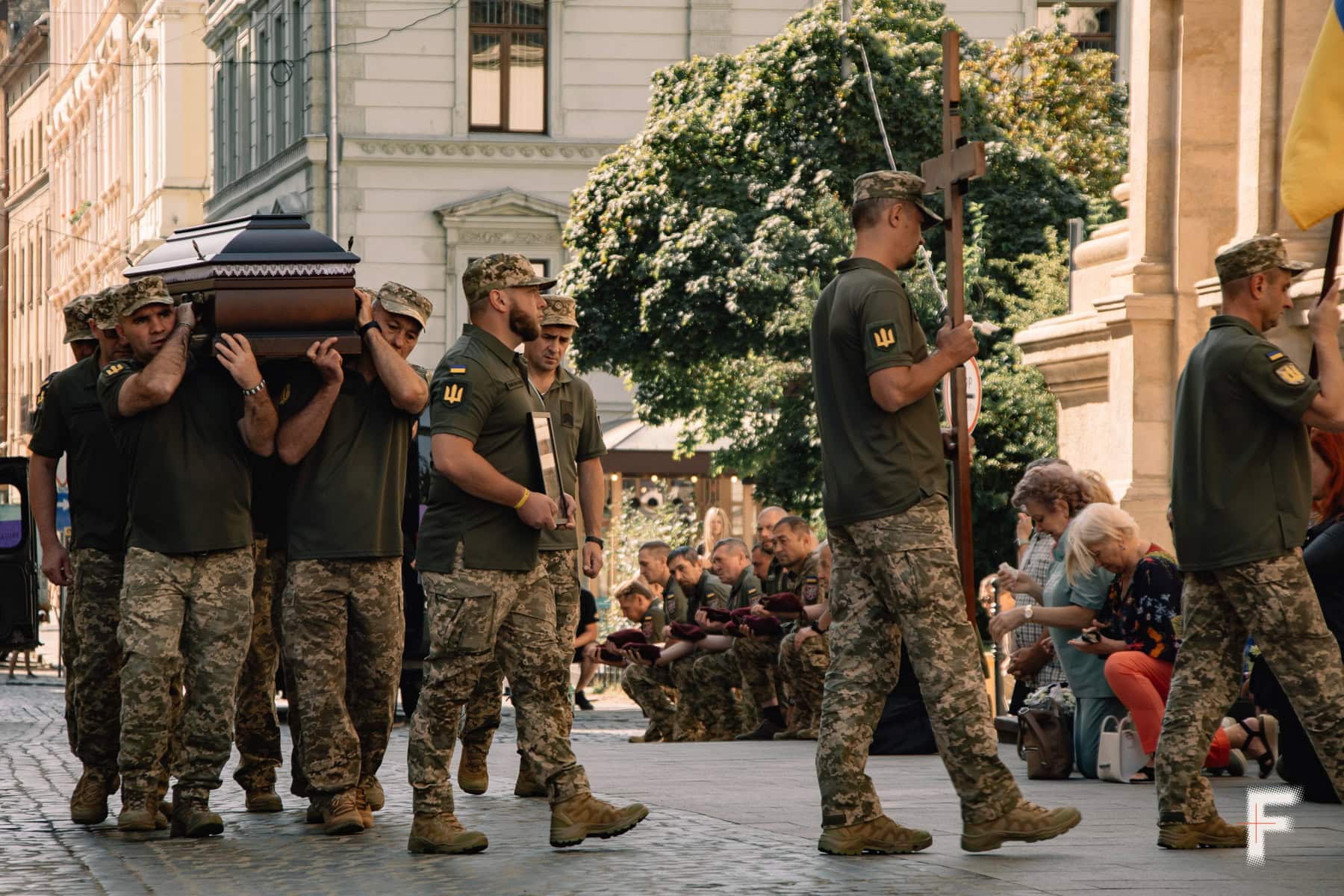

Every morning, during the farewell ceremony, she stands in front of the store’s doors, honoring the memory of fallen defenders. When asked why she does this, she replies: to thank the soldiers who gave their lives so that we could live. In Lviv, the war does not manifest directly, but in how everything pauses for a moment of silence, in the list of names on a dedicated memorial table in a café, in churches and burials, and in the people and their memory.
The Minute of Silence
Every day, Lviv moves to its usual work rhythm. Yet at nine o’clock in the morning, the heart of the city stops to commemorate the fallen. In that minute, it feels as if everyone and everything holds its breath.
Silence falls all around – traffic stops, music fades, people pause; it is as if the city, with its usual clamor and rush, has vanished. Only the wind in the trees along the central avenue and the metronome’s ticking from the loudspeakers can be heard. The silence feels much longer than a minute, for behind each name spoken at this moment lies eternity and the irreversibility of loss. With each day, more and more names must be remembered.
Why do people in the streets kneel?
The service takes place at the Garrison Church of Saints Peter and Paul. Just as during the morning’s Minute of Silence, the city’s central square falls still as the funeral procession slowly moves away from the church.
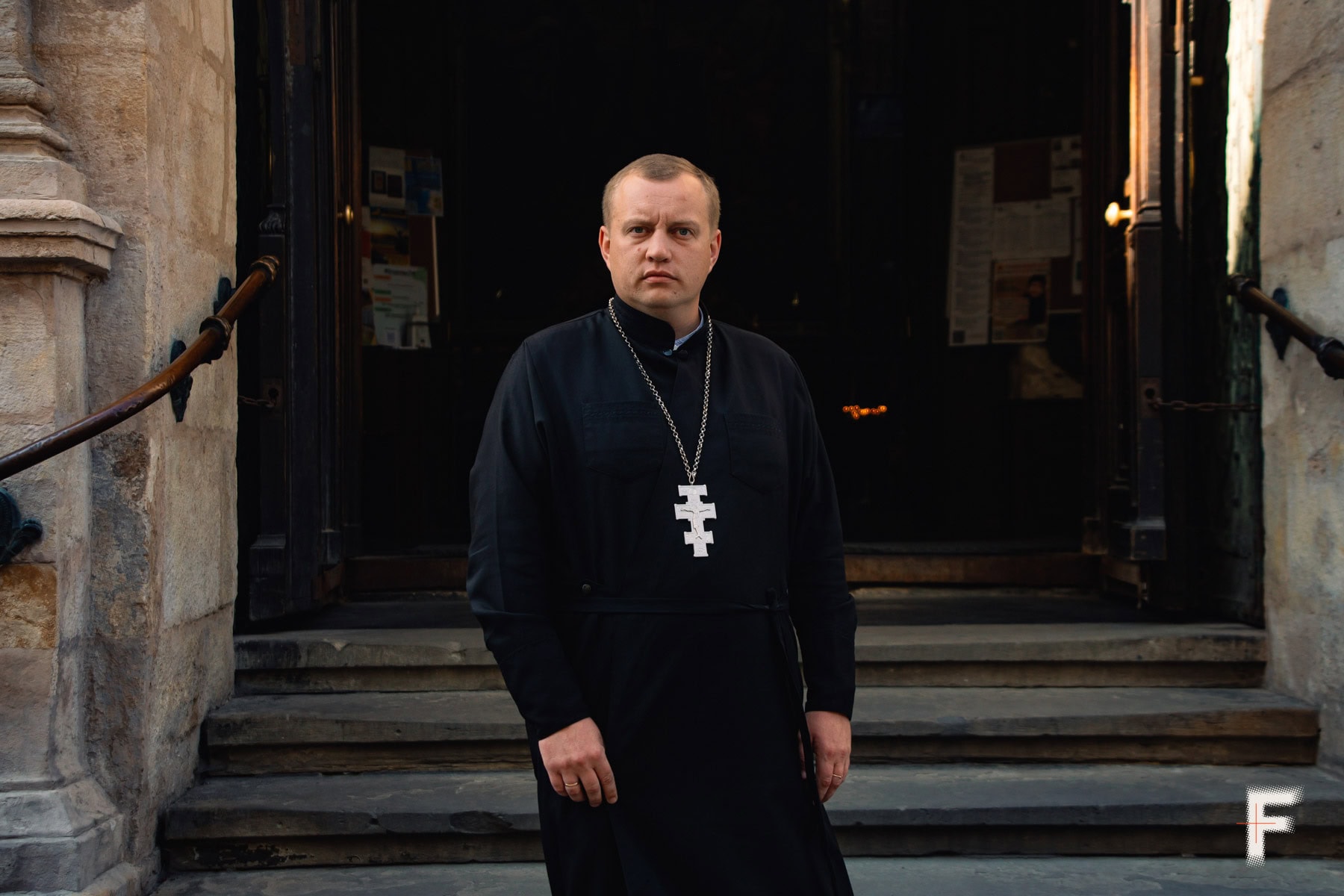

“By their example, by their lives, these soldiers have shown us what it means to love. To love completely, sacrificing their health, time, resources, and even their lives,” says Chaplain Nestor Kyzyk, who will be seeing off the soldiers today.
City authorities are organizing the burial process. The Church is trying to ease this burden for the families by handling the arrangements themselves.
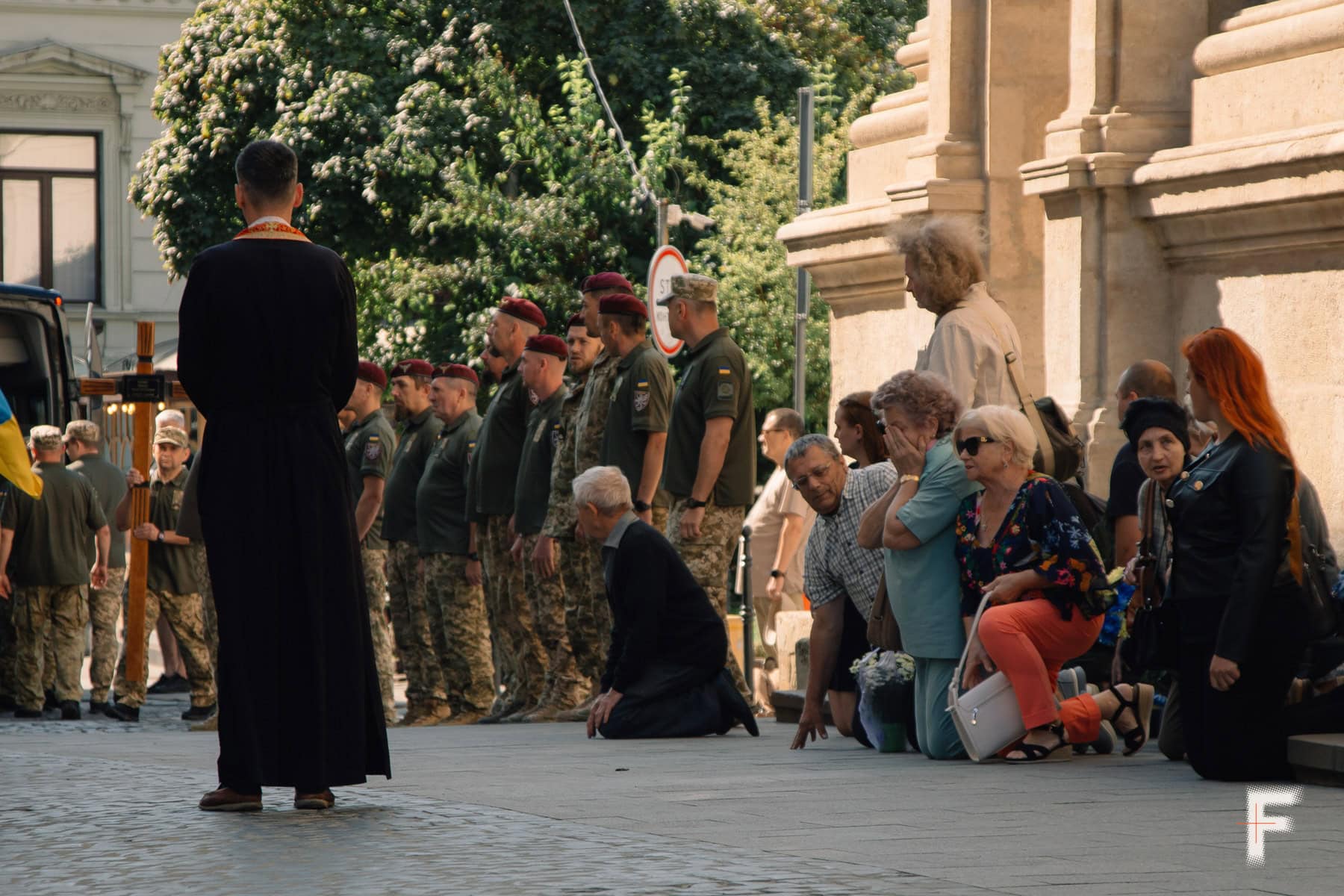

We meet our heroes on our knees, as a sign of gratitude for giving their lives for Ukraine.
The silence now is different from that of the Minute of Silence: the trumpeter of the Lviv Town Hall plays “The Silence” by Nini Rosso. Passersby drop to their knees. The music rises, then the melody fades away. Just a few seconds after the procession’s buses turn the corner, the city center resumes its daily rhythm. Yet further along the road to the Field of Mars, citizens stop and kneel.
[Editor’s note: The Field of Mars, Марсовe полe, in Ukrainian, is a section of Lviv’s Lychakiv Cemetery dedicated to the graves of Ukrainian fallen soldiers.]
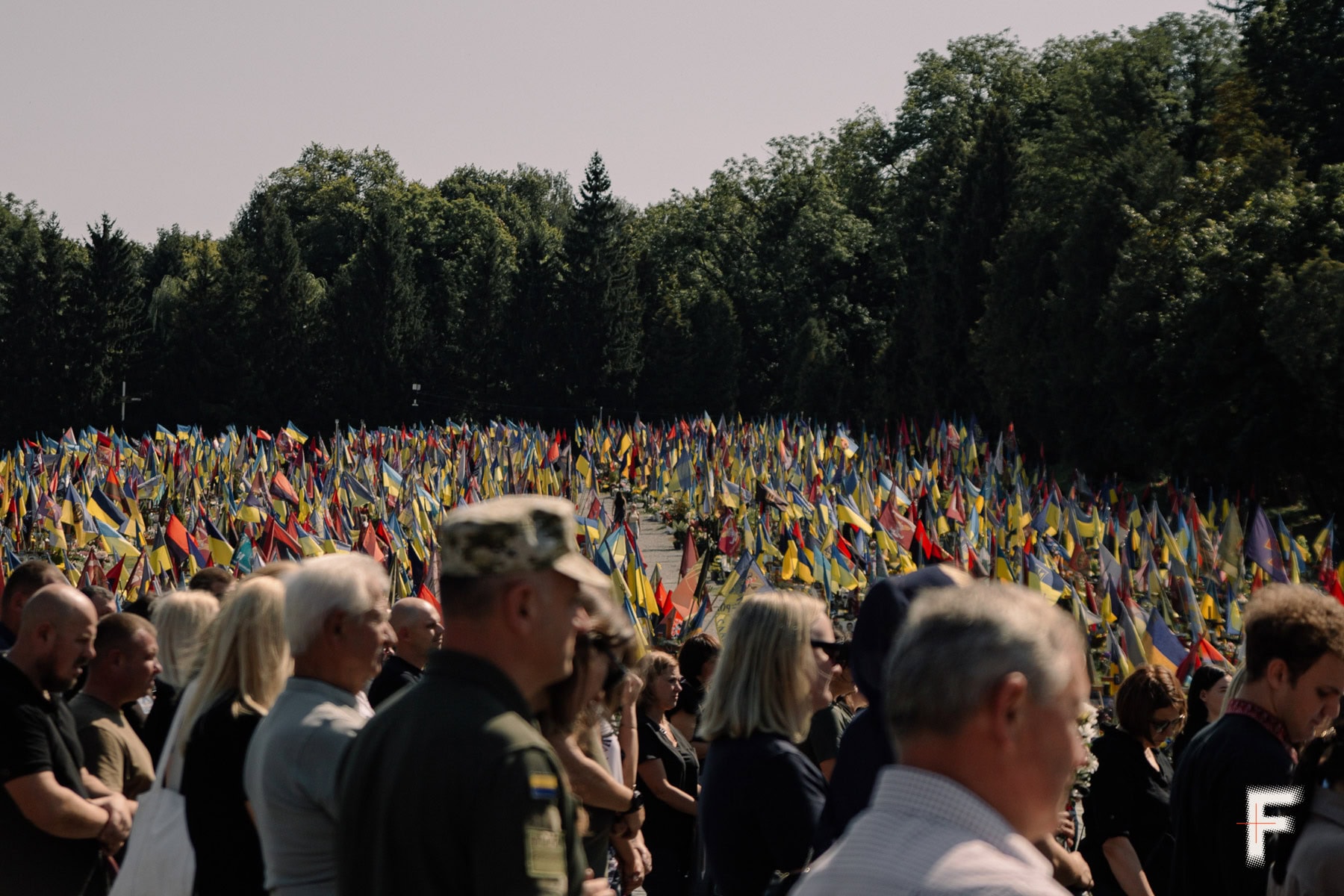

It is hot and bright at the cemetery. The military band plays with force, briefly unsettling the stillness that hangs over the place. Flags form a yellow-blue-black-red sea, and today two more will be added – the burials of Ruslan Chikel and Oleh Volskyi, residents of Lviv who were killed on the front. Here, the national anthem sounds solemn and mournful; in the commands of the military escorts, one can see the weariness – they perform these rituals almost every day, but without diminishing the gravity of the ceremony.
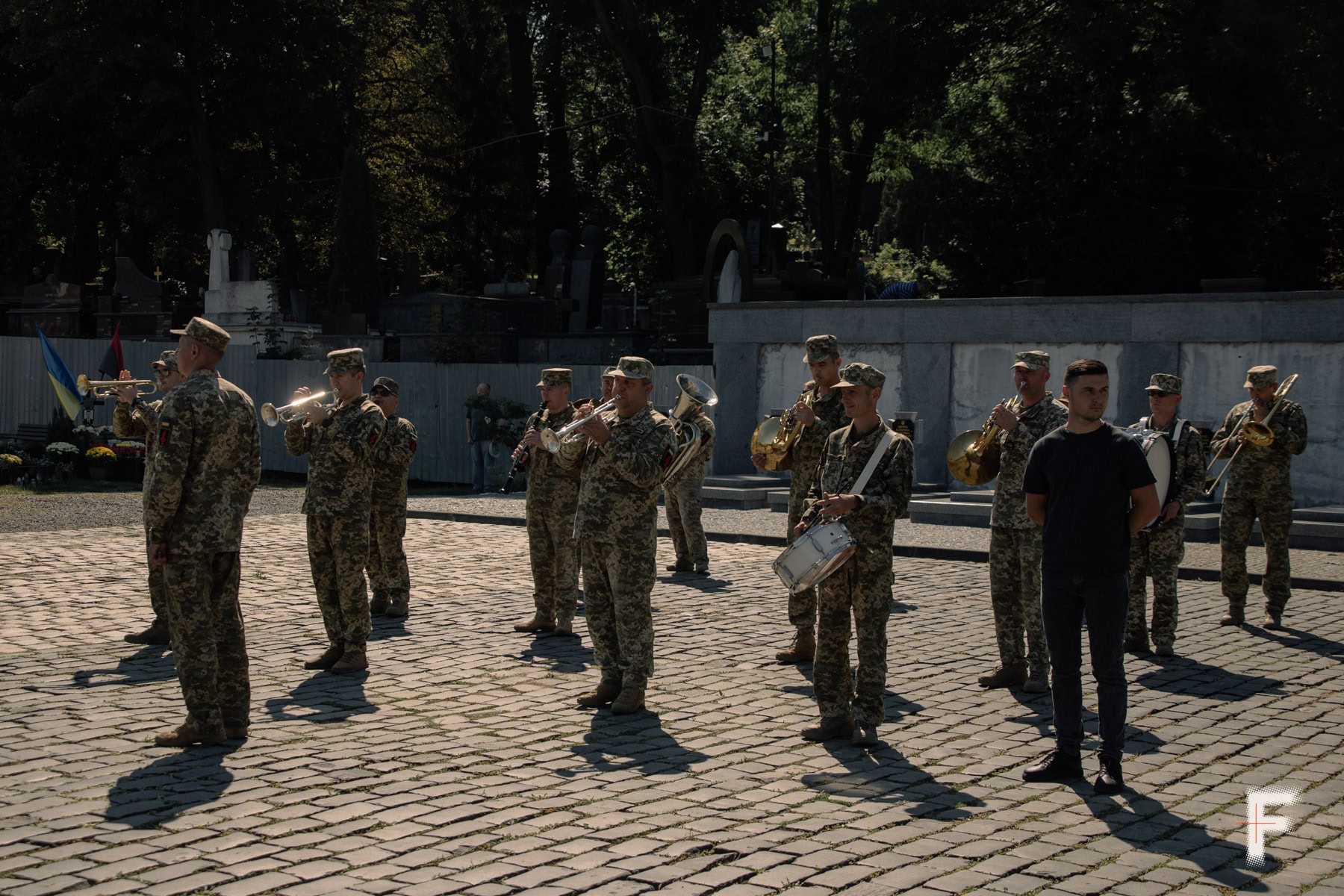

The families of the fallen are presented with the national flags and the Brigade flags, while the hot air ripples from the salutes of the honor guard. It feels as if the funeral lasts an eternity, yet it also seems too brief to say farewell to a human life.
Honoring the Fallen
At the Field of Mars, memory is expressed through flowers and photographs, alongside plaques etched with the years of life. The dates are close together – a marker of a life that barely had time to unfold. Flowers serve as a reminder that even after death, soldiers are not forgotten – memories of them are cherished as a most valuable gift. Yet memory is not confined to the cemetery.
That memory is a societal need. Its expressions extend beyond established rituals and designated spaces – they permeate the urban landscape and everyday life. Memory changes form: it is no longer just words and agreed upon dates.
“Memory is an action we create together. Even something simple, like writing the name of a fallen soldier on a sheet of paper placed on a table dedicated for this purpose in a café,” explains Haiane Avakian, co-founder of the Memorial platform, about the “Table of Memory” initiative launched by the Hrabar Foundation in 2023. According to Avakian, this year there are already more than 270 such tables in Lviv. More than 3,000 establishments across Ukraine and abroad participate in the initiative. These include not only cafés, but also bookstores, libraries, universities, schools, and even military units, says the founder of Memorial.
By writing a name, visitors pause for a moment at the table, lost in their own thoughts. Within an hour, the sheet fills with a dozen names, as if the act itself has a therapeutic effect. This form of remembrance – writing a name – reduces the formality. It becomes easier to remember the person, their individuality. It creates a moment of intimacy – as if you are alone with them.
Memories last longer when put into action. That is why August 29, the Day of Remembrance for Ukraine’s defenders, also becomes the Day of Sunflowers. Organizations participating in the “Table of Memory” initiative display yellow bouquets to honor the fallen and affirm the importance of remembering them. Sometimes, one can take a sunflower home by making a donation – this, too, is an act.
The sunflower as a symbol of memory
Some people pin the flower to their clothing near their hearts. The city streets brighten with reminders of those who have fallen; through this association, yellow has come to stand for remembrance. August 29 is not the only day Ukraine honors its fallen. Yet the sunflower, rooted in memory, connects the past to the present. Actions centered around this symbol keep memory alive while distinguishing this day from others, elevating the significance of remembrance.
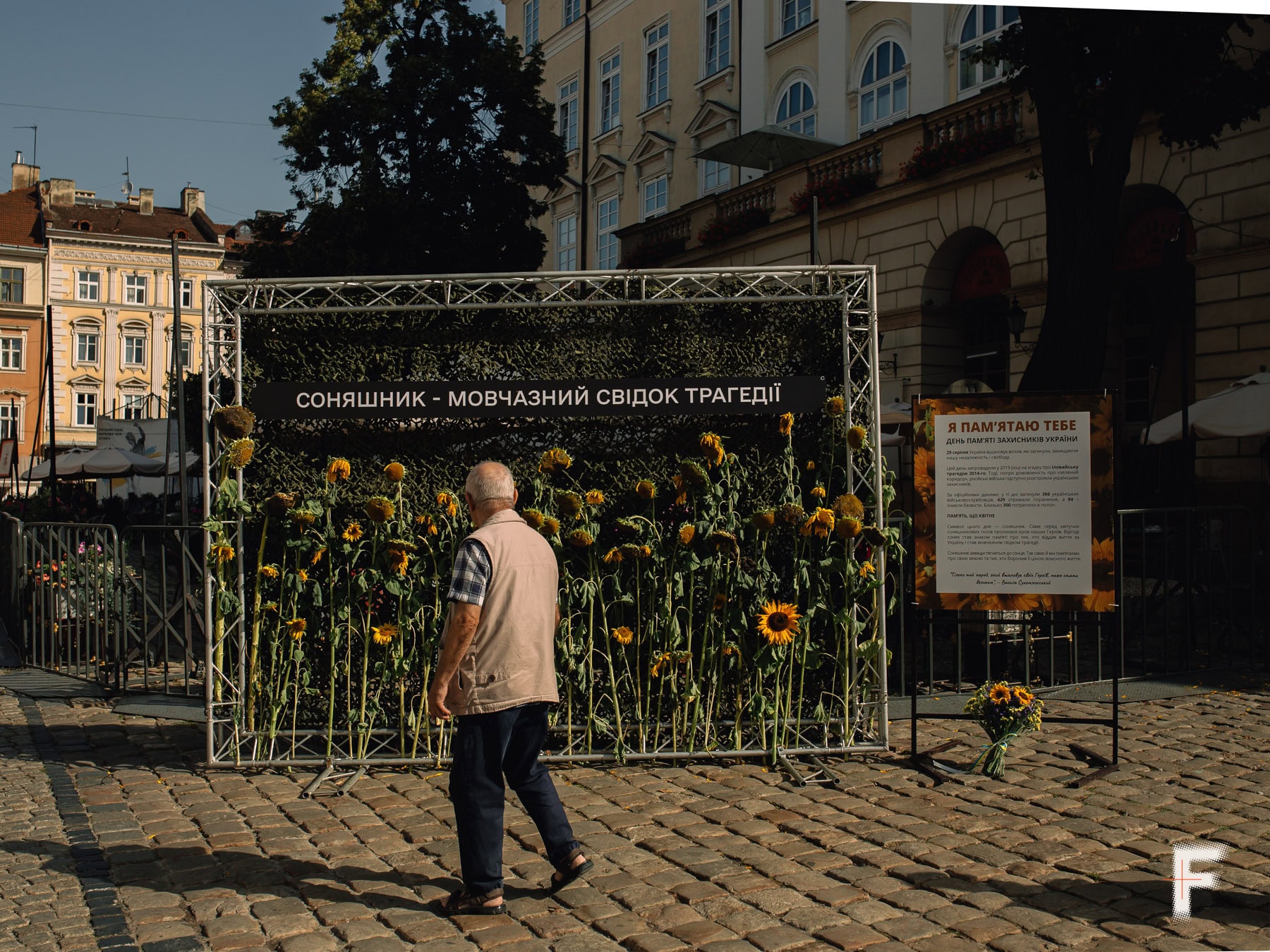

Action allows one to become part of remembrance. The nationwide initiatives are often not enough to honor each person individually, to capture and preserve the details. For this reason, the families of the fallen create their own ways to remember – often through action, because memory lasts longer that way.
This is how Yurii, the brother of Iryna “Cheka” Tsybukh, guides people through Lviv, stopping by a library, a monument, and even in the middle of the street. He talks about her life, sharing small details that may have seemed insignificant while she was alive. He shares personal memories, introducing Iryna and her Lviv to others, giving those who never knew her a chance to remember. To come, to learn more. To act so as to preserve memory.
[Editor’s Note: Iryna “Cheka” Tsybukh (1998–2024) was a Ukrainian combat medic and journalist. Just days before her 26th birthday, she was killed on the Kharkiv front. Her funeral drew large crowds of mourners, and she became a national symbol of selfless service.]
Memory is action. That is why, at nine o’clock in the morning, a tram driver stops the tram, steps out of the tramcar, and joins the passersby. In the name of remembrance, the silence of the Field of Mars is broken by the salutes of the military honor guard. Remembering, people pin sunflowers to their clothing, write the names of their loved ones on special sheets of paper, and kneel when a soldier returns “on their shield.” The life of a city in the rear is marked by actions that honor those who are no longer with us.
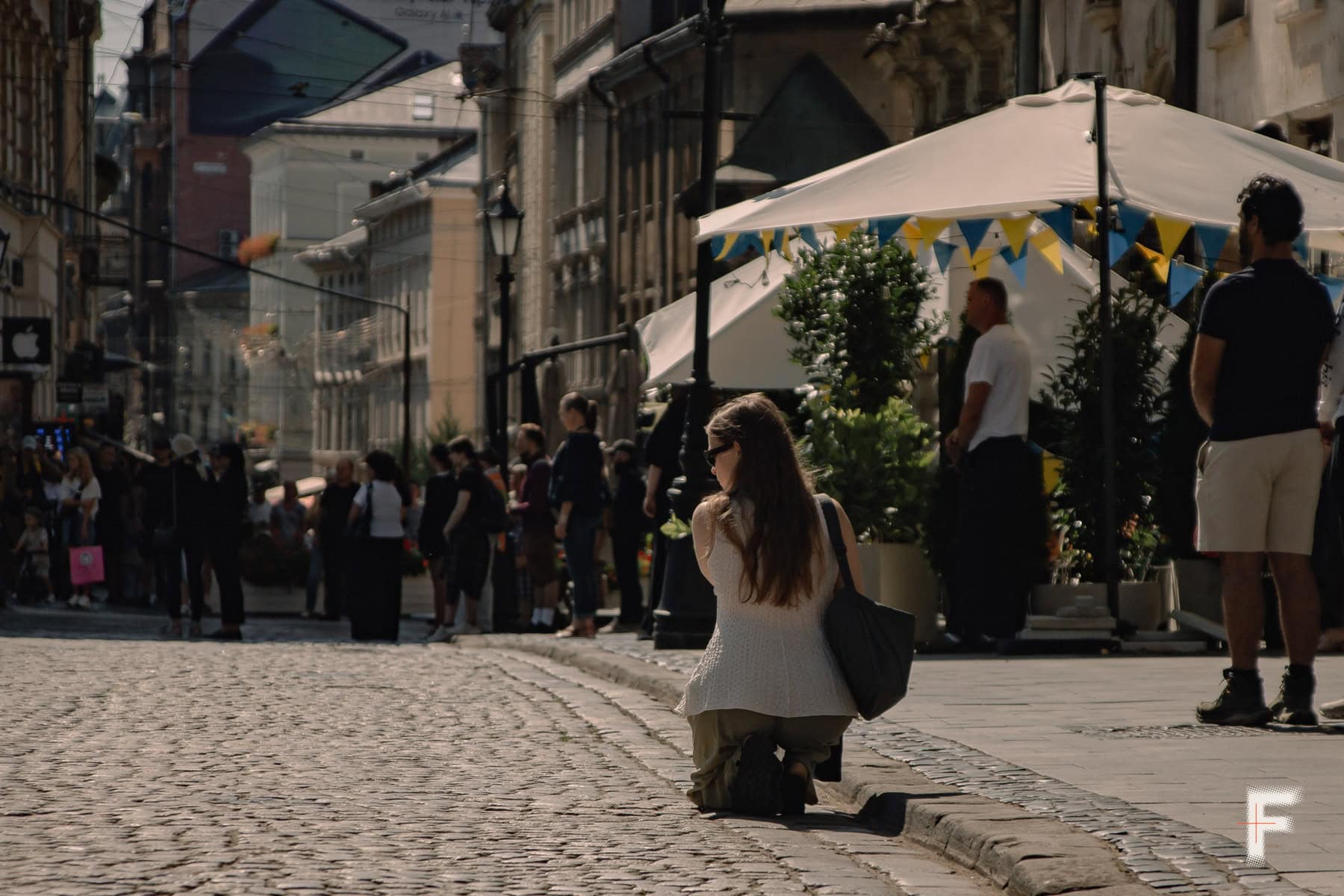

Remembrance through action permeates space and time: it manifests in dates, projects, visual designs, and countless initiatives, each with its own focus and message. Action is necessary, because forgetting would turn a relatively safe city – one that understands the price of its safety – into a city naive of danger. Lviv takes action, and through this, it becomes infused with memory.
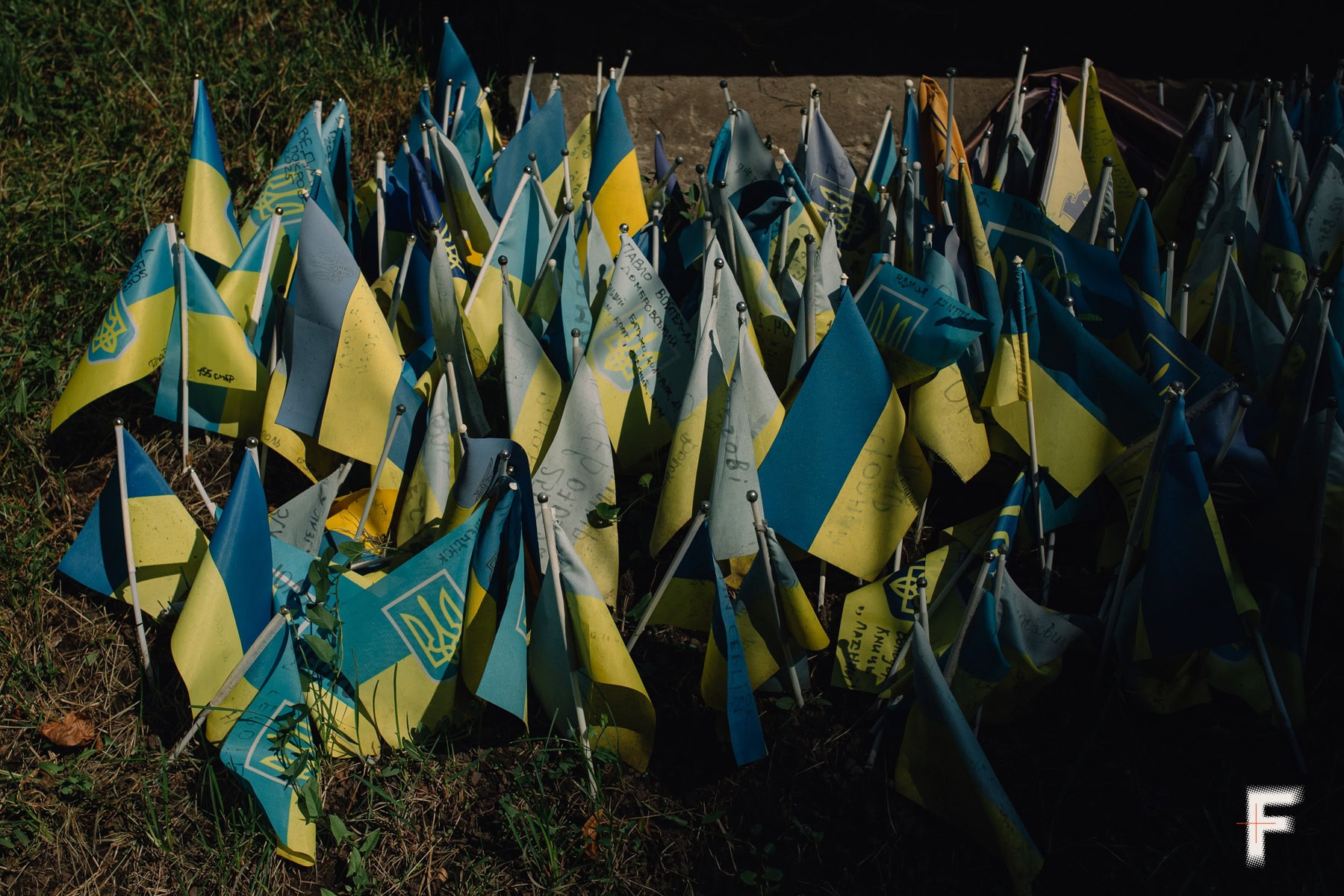

Text: Yulia Huz
Photos: Anna Zubenko
Adapted: Irena Zaburanna
Read more — When a nation remembers: why and how days of mourning are declared in Ukraine
